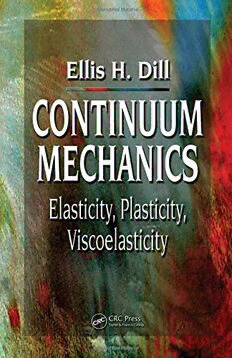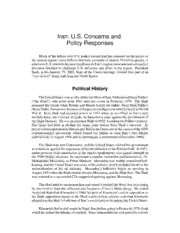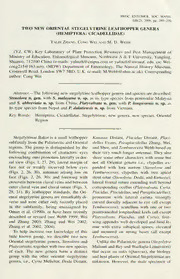
Analog Network Coding for Multi-User Spread-Spectrum Communication Systems PDF
Preview Analog Network Coding for Multi-User Spread-Spectrum Communication Systems
Analog Network Coding for Multi-User Spread-Spectrum Communication Systems Georges Kaddoum∗, Member, IEEE and Pascal Giard†∗, Student Member, IEEE ∗LaCIME, Department of Electrical Engineering, E´cole de technologie supe´rieure. †ISIP, Department of Electrical and Computer Engineering, McGill University. Emails: georges.kaddoum@lacime.etsmtl.ca,pascal.giard@mail.mcgill.ca 4 1 0 2 n decoding is carried out at the user level since the linear a Abstract—This work presents another look at an analog mapping is naturally done in the physical channel. An ANC J network coding scheme for multi-user spread-spectrum com- schemecan be realizedand implementedwith ease. However, munication systems. Our proposed system combines coding and 0 as the relay does not remove the noise, it is forwarded cooperation between a relay and users to boost the throughput 1 andtoexploitinterference.Tothisend,eachpairofusers,Aand along with the desired signals. Despite this disadvantage, an B, that communicate with each other via a relay R shares the ANC scheme – with some extensions to allow multi-user ] T same spreading code. The relay has two roles, it synchronizes transmission and to exploit the interference present in the I network transmissions and it broadcasts the combined signals network – is preferred since a classic PNC scheme remains . received from users. From user B’s point of view, the signal is s significantly more complex. In a PNC scheme, the following c decoded, and then, the data transmitted by user A is recovered [ by subtracting user B’s own data. We derive the analytical supplementaryoperationswould be executedon a relay node: performance of thissystem for an additivewhiteGaussian noise decodethereceivedsignalsthatusedifferentspreadingcodes, 1 channel with the presence of multi-user interference, and we maptheresultingsignals,applytheappropriatespreadingcode v confirm its accuracy by simulation. depending on the destination, and finally forward the signals. 0 The proposed ANC scheme in this paper can be used for 2 I. INTRODUCTION 2 a spread-spectrum communication system using any spread- Dealingwithinterferencewhensignalsfrommultiplenodes 2 spectrumcode(Gold,Kasami,Walsh, chaotic,...).Thechoice 1. arrive simultaneously is a major challenge in wireless net- of the chaotic signals is attributable to the advantages of- works. Recently, many researchers showed a high interest in 0 fered by this class of spreading sequences [4], [5]. Notably, usingnetworkcodingtechniqueslikeAnalogNetworkCoding 4 their sensitivity to initial conditions allows chaotic maps to 1 (ANC) or more generally Physical Layer Network Coding theoretically generate an infinite number of very low cross- : (PNC) to mitigate the effect of interference and to boost the v correlatedsignals.Thesewidebandsignalshavebeenshownto network throughput [1]–[3]. i bewell-suitedformulti-userspread-spectrum(SS)modulation X In a PNC communicationscheme, a pair of users A and B applications [6]–[8]. In addition, some types of chaotic mod- r (i.e. terminal nodes) first simultaneously transmit their data a ulation carry the same advantages as other conventional SS signals to a relay. The relay then transforms the received modulations,includingmitigationoffadingchannels[9],[10], overlapped signals into a network-coded message (e.g. does jammingresistance, low probabilityofinterception(LPI) [11] a bit-wise XOR of the messages from each terminal node) and secure communications [12]. Furthermore, many papers andbroadcaststhe resultingsignal.By knowingthereversible demonstratedthatchaos-basedsequencesproducegoodresults network-codingoperationcarriedoutbytherelay,eachtermi- comparedto that of Gold sequencesor other independentand nal nodeis able to extractthe message sent by the other node identically distributed sequences, notably reducing multi-user ofits pairbyremovingits owncontributionfromthereceived interference and peak-to-averagepower ratio (PAPR) [4], [5]. signal. Thus,two time slots are requiredforboth usersA and Moreover,codesynchronizationtechniquesusedin traditional B to exchangeone message. This constitutes an improvement SS communication systems to achieve robust synchronization over the traditionalrelaying scheme where four time slots are in two distinct phases (i.e. code acquisition and tracking) needed [3] to achieve the same goal. wererecentlyappliedtochaosSScommunicationsystems[8], On the other hand, in ANC schemes as proposed in [2], a [13]. In this paper, we assume that this code synchronization relay simply forwards superimposed signals to users. Signal technique is adequate to demodulate the transmitted symbols This work is partially supported by the discovery grant 435243−2013 in our system. fromtheNaturalResearch CouncilofCanada(NSERC). In the literature, many chaos-based SS systems with co- herent and non-coherentreceivers are proposed and evaluated based spread-spectrum communication system. Section III is [14]. The most noteworthy systems include Chaos Shift Key- dedicated to explaining the design of the proposed ANC-SS ing(CSK) [6],DifferentialChaosShiftKeying(DCSK)[15]– scheme. The analytical performance analysis is presented in [17] and mutli-carrier DCSK [18]. With coherent receivers, SectionIVwherewederivetheanalyticalbiterrorrate(BER) like in CSK systems, a chaotic signal is used as a spreading expressions for an additive white Gaussian noise (AWGN) sequence at the transmitter to spread the information data channel in presence of multi-user interference. Simulation signal. At the receiver, chaotic synchronization is required in results validating our analytical approach are shown in Sec- ordertodemodulatethetransmittedbits[8],[13],[19];aswell tion V, and finally, some concluding remarks are given. as a coherent correlator and a threshold detector are used to decode the signal. On the other hand, when DCSK is used, II. CSK COMMUNICATION SYSTEM chaoticsynchronizationisnotrequiredatthereceiveri.e.exact Thestudiedspread-spectrumsystemusesaCSKmodulation knowledge of the chaotic signal is not mandatory in order to in which data information symbols (s =±1) with period T i s demodulate the transmitted bits. However, a DCSK system is arespreadbyachaoticsequencex .Anewchaoticsample(or k lesssecure,anddoesnotperformaswellasacoherentchaos- chip)isgeneratedattimeintervalsequaltoT (x =x(kT )). c k c based communication system [6]. The emitted signal e(t) at the output of a transmitter is: Related Works: In [20], [21], ANC schemes for CDMA ∞ β systems were proposed where each user in the system is e(t)= s x g(t−(iβ+k)T ) (1) i iβ+k c assignedonedistinctspreadingsequence.Todecodeamessage i=1k=1 XX fromagivenuserinthenetwork,anodeappliesthespreading where β is the spreading factor that is equalto the numberof sequence of the other user. In other words, the proposed chaoticsamplesinasymbolduration(β =T /T );andg(t)is s c schemerequiresaprioriknowledgeofthelistofallusersalong the pulse shaping filter. A rectangular pulse of unit amplitude with their associated spreading sequences in order to decode on [0, T ] is used in this paper. c thetransmitteddatawithoutexploitingmulti-userinterference. For an AWGN channel, the received signal is: Inthispaper,weproposeadifferentapproachforSSsystems. Inournetwork,weconsideratwo-waywirelesssystemwithL u(t)=e(t)+n(t) (2) source nodes (i.e. users) (L is an even number for simplicity) where n(t) is additive white Gaussian noise with zero mean with one single relay. Each node uses direct-sequence SS and a power spectral density equal to N /2. In order to modulation. The main aim of this paper is to propose an 0 demodulate the transmitted bits, the received signal is first ANC scheme for multi-user SS systems which reduces the multiplied by the local chaotic sequence, and then integrated numberof time slots requiredto exchangedata, to exploitthe over a symbol duration T . Finally, the transmitted bits are interference, and to increase the throughput of the network. s estimated by computing the sign of the decision variable at To tackle this challenge, we propose a new design in which the output of the correlator. eachpairofuserswishingtocommunicateinthisnetworkvia the relay share a spreading code. The fact that both users of β a pair use the same spreading code exploits the interference Dsi =sign siTc (xiβ+k)2+wi =siEb(i)+wi (3) and boosts the throughputof the system. k=1 ! X In an ANC scheme, network synchronization is critical wheresign(.)isthesignoperator,E(i) isthebitenergyofthe b to any reliable implementation. In our design, network syn- ith bit and w is the noise after despreading and integration. i chronization is maintained by the relay. The relay sends a For the sake of simplicity, we omit the pulse shaping filter request-to-transmitsignalonceitisreadytoreceivethenodes’ expression and we normalize the time chip T to 1. c signals.Thisoperationforcesuserstosimultaneouslytransmit Throughoutthepaper,aBernoullimappingfunctionisused their messages. Once the users receive the request-to-transmit signal,theystarttheirtransmissionphaseinthefirsttimeslot. x = Gxk−F if xk ≥0 (4) Inthatphase,theLnodestransmittheirsignalssimultaneously k+1 Gxk+F otherwise (cid:26) totherelay.Inthesecondtimeslot,orduringthebroadcasting where F and G are constants. Thismap is chosento generate phase,therelayretransmitsthesummedreceivedsignalstoall the chaotic sequences because of its implementation effi- users in the network. Each user first multiplies the received ciency [22]. In addition, chaotic sequences are normalized so signal with its local spreading sequence, it then decodes the thatE[x2]=1andhaveazeromeantoavoidDCtransmission k signal, and finally, it removesits own data in order to recover i.e. E[x ]=0. k thedatasentbytheothermemberofthepair.Theseoperations Generally, two different approaches have been adopted to are further detailed later in this paper. use chaotic signals in digital communication systems. Either Paper Outline: The remainder of this paper is organized the real value of a chaotic signal is used to modulate the bits as follows. In Section II, we briefly present the chaos- to be transmitted [6] or the chaotic signal is quantized and used to transmit data [7], [23], [24]. The latter offers better 2) Transmission phase: In this first time slot, the nodes performance than conventional spreading systems. However, transmit their signals to the relay. Each pair of users which that approach leads to a loss of chaotic signal properties [4]. want to communicate between them use the same spreading Thus, it is the first approach that is adopted in our paper. code. The received signal u (t) at the relay R is: N Note that our general analysis can nonetheless be adapted to ∞ β quantized chaotic signals. uN(t)= (sA,i+sB,i)x(A,B),iβ+k i=1k=1 III. ANC-SS COMMUNICATION SCHEME ∞ P Pβ (5) + (s +s )x +n (t) In thissection,s , s , and s referto the data ofusersA, l,i m,i (l,m),iβ+k N A B R i=1 l∈E m∈Ek=1 B,andthemappeddataintherelayRrespectivelyrepresented Pl6=Pm P P by the signals e , e , and e . The use of an ANC scheme where s is the ith symbol of user l spread by the sequence A B R l,i limitstherequirednumberoftimeslotstotwo.Thatrepresents x and E = {1,2,..,L}\{A,B}. In (5), u (t) is (l,m),iβ+k N animprovementin comparisontoexistingnon-networkcoded the received signal coming from different nodes. The first schemes or straightforward network coding schemes [3]. term in this equation represents the sum of the transmitted In an ANC scheme, s is computed directly from s + signals from the user pair A and B. The second term in (5) R A s which occurs naturally in the physical channel from the representsthemulti-userinterferencesignalinwhicheachpair B superimposition of signals. In this case, the arithmetic sum is of users l and m use the same spreading code x , (l,m),iβ+k considered a form of network coding. In conventional multi- and n (t) represents the additive white Gaussian noise of N userspread-spectrumsystemseachuserhasits ownspreading the transmission phase with zero mean and variance equal to code.InthecontextofANCschemes,akeyrequirementisthat N /2. 0 eachnodemusthavetheknowledgeofallspreadingsequences 3) Broadcasting phase: In the second time slot, the relay attributed to users. This coding does not allow exploition of forwardsthereceivedsignalu (t)tothedifferentnodesinthe N interference. The main challenge in our paper is to provide a network.Inoursystemweassumethattherelayjustforwards reliableschemethatiseasytoimplementwhilemitigatingthe the signal without amplifying it. Furthermore, the amplifying interference present in the network. operationcan be added to the relay when it is in the presence In our proposed scheme, each pair of users A and B ofafadingchannel.Thiscanbedonewithoutanymodification wishing to communicate with each other must use the same to our ANC-based design. Thus, the signal broadcast by the spreading code x . This scheme is illustrated in Fig. 1 relay u (t) is: (A,B) R and summarized in Table I. This particular design allows u (t)=u (t)+n (t) (6) R N R the exploitation of interference and users can still extract the information from the other member of the pair. The detailed where nR(t) is the additive white Gaussian noise of the presentation of our communication scheme along with the broadcasting phase with zero mean and variance equal to relevant mathematical descriptions can be broken down into N0/2. 4) Decoding phase: For user B to be able to extract thefollowingfourphasesinwhichtwotimeslotsareallocated for the transmission and broadcasting phases respectively: the information from the other member of the pair, A, the receivedsignalisfirstdespreadusingthesamespreadingcode x andthendecoded.Lastly,nodeB removesitsown (A,B),iβ+k L L−1 datafromthedecodedsignal,asdetailedinTableI,torecover the data originating from node A. B IV. PERFORMANCE ANALYSIS OF THEANC-SS SYSTEM A Spreadingcode Thesecondobjectiveofthispaperistovalidatetheconcept x(A,B) of the proposed scheme. Once the system is explained, the Spreadingcode R performance of the ANC-SS system over an AWGN channel x(A,B) and in presence of multi-user interference is investigated. As 1 2 mentioned in Section III, in the first phase, users A and B Timeslot1 transmit their signals which are later forwarded by the relay. In the reception phase, the received signal is the combination Timeslot2 of the two transmitted signals from A and B along with the Fig.1. ANC-SSschemewithLusers. additive noise signals n (t) and n (t), and the multi-user N R interference.Thedecisionvariableforagivenbititransmitted 1) Request-to-transmitphase: Inthispreliminaryphase,the from A is: relay broadcasts a signal informing all users to transmit their β signalsto the relay.This operationallows the synchronization D = u (t)x . (7) of the transmission taking place in the first time slot. sA,i R (A,B),iβ+k k=1 X TABLEI ANC-SSMAPPINGSCHEME Spreading symbol Spreading symbol Signal broadcast from the Despreading/decoding Extracting symbols of B, from A from B relay symbol at B recovering symbols of A 1x 1x 2x 2 (2−1)=1 ( , ) ( , ) ( , ) 1xAB −1xAB 0xAB 0 (0−(−1))=1 ( , ) ( , ) ( , ) −1xAB 1x AB 0xAB 0 (0−1)=−1 ( , ) ( , ) ( , ) −1xAB −1xAB −2xAB -2 (−2−(−1))=−1 ( , ) ( , ) ( , ) AB AB AB The mean of D is reduced to the term given in (8) ance σ2 . The development of (7) for a given bit i is: sA,i DsA because the elements of the noise components and chaotic D = signals are independent and both have a zero mean: SA,i ∞ β β (s +s )x2 + n x A,i B,i (A,B),iβ+k N,k (A,B),iβ+k E DsA,i =Eb(i)sR,i (8) iP=1∞kP=1 β kP=1 + (s +s )x x l,i m,i (l,m),iβ+k (A,B),iβ+k (cid:2) (cid:3) i=1 l∈E m∈Ek=1 where s = s + s ∈ {−2,0,2}, and E(i) = Pl6=Pm P P R,i A,i B,i b β β + n x . x2 . R,k (A,B),iβ+k (A,B),iβ+k k=1 k=1 P (11) PThe signal given in (7) is decoded after comparing its The statistical properties of the decision variable D are sA,i amplitude to two predetermined thresholds γ1 and γ2. Based derivedfor a fixed bit i. The varianceof the decision variable on the model provided in [25], the optimal thresholds in a is: noise free environment using the values given in (8) are: σ =E D 2 −E D 2 (12) DsA,i sA,i sA,i Developping (12) gives:h(cid:0) (cid:1) i (cid:2) (cid:3) γγ12 ==(cid:0)(cid:0)02−E22b2+E0b(cid:1)(cid:1)==E−bEb (9) σDsA,i =β E"(cid:18)kP=β1sA,ix2(A,B)2,iβ+k(cid:19)2#−hEb(i)sA,ii2 β +E n x where Eb = x2(A,B),β+k . "(cid:18)k=1 N,k (A,B),iβ+k(cid:19) # k=1 P 2 In fact, whPen the received signal amplitude of (7) is grater +E β (s +s )x x than γ2, we decide that the symbol is 2. Similarly, if the l m k=1 l,i m,i (l,m),iβ+k (A,B),iβ+k received signal amplitude is lower than γ1, we decide that lβ6=P∈mE P∈E P 2 the symbol is −2. Finally, if the signal amplitude is between +E n x . ,k ( , ),iβ+k γ and γ , it is declared 0. Accordingto Table I, the decoded "(cid:18)k=1 R AB (cid:19) # 1 2 P (13) signal space is {−2,0,2} with corresponding probabilities of Foragivenfixedbiti,thefirstandthesecondtermsin(13) 25%, 50% and 25% respectively. are equal since D is constant. In addition, the spreading sA,i Finally, the estimated data of user A sˆA is computed by sequences and the Gaussian noises are independent and zero subtracting the data symbol sB from the decoded symbol mean signals. It follows that the variance of the decision obtainedfromthesignalgivenin(7).Accordingtothecentral variable is reduced to the variance of the noise terms and limit theorem, multi-user interference follows a Gaussian themulti-userinterference.Therefore,thevarianceexpression distribution. Therefore, the BER of sˆA based on the signal becomes: space probabilities is the BER of the decoded signal given as β 2 follows: σ =E n x DsA,i "(cid:18)k=1 N,k (A,B),iβ+k(cid:19) # P 2 BER= β +E (s +s )x x 24√√22ππ11σσDDssAA γγ12−γRe∞1xpex(cid:18)p−(cid:18)(2rσ2+σD2−2D2sErAs2bA)2(cid:19)(cid:19)ddrr++γR∞γ2γ12eexxpp(cid:18)(cid:18)2−σ−D2(2rrσs2−AD22sE(cid:19)Ab)d2r(cid:19)!d+r!. +E"(cid:18)kPll=β6=P∈1mEnmRP∈,kExkP(=A1,B),li,βi+k(cid:19)m2#,i. (l,m),iβ+k (A,B),iβ+k (14) R R (10) The variance of each component in (14) is computed as (10) requires the computationof the decision variable vari- follows. Sincethenoisesamplesareuncorrelatedandindependentof V. SIMULATION AND DISCUSSION the chaotic sequence, and the chaotic samples are themselves independentfrom each other, the conditional variances of the To evaluate the performance of a multi-user ANC-SS sys- first and third components are: tem, we plot the computed BER expressions obtained in (10) against simulation results over an AWGN channel with the 2 β presenceofmulti-userinterference.TheresultsshowninFig.2 E n x =βE[x2 ]N /2 k=1 N,k (A,B),iβ+k! (A,B),iβ+k 0 are obtained for different numbers of users L and spreading P factors β. =E(i)N /2 b 0 (15) where E(i) =βE[x2 ]. 100 b (A,B),iβ+k Similarly: 10 1 − β 2 E nR,kx(A,B),iβ+k! =Eb(i)N0/2. (16) 10−2 k=1 X 10 3 − EachpairofbitsexchangedbetweenAandBisspreadwith R L=10,β=100 the same normalizedchaotic sequence. Chaotic sequencesare BE10−4 L=10,β=100 uncorrelatedandchaoticsamplesamonga givensequenceare L=10,β=350 independent and normalized with E[x2] = 1. It follows that 10−5 L=10,β=350 the second term of (14) is: k L=6,β=350 10−6 L=6,β=350 2 L=2,β=350 E (s +s )x x = l,i m,i (l,m),iβ+k (A,B),iβ+k (17) 10 7 L=2,β=350 − 2Eh[(cid:0)(x(l,m),iβ+kx(A,B),iβ+k)2]. (cid:1) i BPSKlowerbound 10 8 − 0 2 4 6 8 10 12 14 Then, the variance of the multi-user interference signal is: E /N (dB) b 0 2 β Fig. 2. Performance of the multi-user ANC-SS scheme. Plain and dashed E (sl,i+sm,i)x(l,m),iβ+kx(A,B),iβ+k linesrepresentanalyticalandsimulationresultsrespectively.Listhenumber l∈E m∈Ek=1 ofusersandβ isthespreading factor. TheBPSKcurveisforasingleuser. l6=Pm P P =E(i)(L−2). b (18) Fromthe figure,itis clear thatthe computedandsimulated Finally, the variance of the decision variable is: BER match closely in all studied cases. The same figure shows the effect of the spreading factor σDsA,i =Eb(i)N0/2+Eb(i)N0/2+Eb(i)(L−2) (19) in the presence of multi-user interference. In such systems, =E(i)(N +L−2). it is suitable to operate with a large spreading factor to b 0 reduce the multi-user interference. Indeed, a large spreading ManypapersintheliteratureapplytheGaussianapproachto factor spreads the interference power over a wide bandwidth, compute the performance of chaos-based SS communication reducing its effect on the demodulated useful signal. systems [26], [27]. That approach considers the transmitted Fig. 2 also plots the BER performance for L = 2 users. bit energy E(i) as constant. Given the non-periodic nature of In that case, the network does not have any multi-user in- b chaotic sequences, the Gaussian approach leads to inaccurate terference and the performance can be compared to that of results for small spreading factors [28]. However, for large a conventional BPSK modulation. It can be seen that the spreading factors, this approach can be considered as a good performance of a mono-user BPSK point-to-point system is approximation that closely matches the exact performance of better than the ANC-SS one. The degradationin performance chaos-based SS communication systems [26]. In this paper, comes from the noise signal added in the transmission phase. theGaussianapproachisconsideredsinceweareinterestedin This is a disadvantageof the ANC scheme in which the relay studying our proposed ANC-SS scheme with large spreading does not remove the noise from the received signal; the noise factorsinordertoincreaseitsresistancetomulti-userinterfer- isforwardedtousersalongwiththesignal.Ontheotherhand, ence. In this case, E(i) can be assumed as constant. Thus our as explained and shown in this paper, a multi-user ANC-SS b BERexpressionisgivenby(10)wherethecomputedvariance system is easier to implement than its physical layer network is from (19). coding scheme counterpart. VI. CONCLUSION [10] H.-P. Ren, M. S. Baptista, and C. Grebogi, “Wireless communication withchaos,”Phys.Rev.Lett.,vol.110,p.184101, Apr2013. In this paper, we presented a design for a multi-user ANC- [11] J.YuandY.-D.Yao,“Detection performance ofchaotic spreading LPI SS system. The goal of the proposed ANC scheme is to waveforms,” IEEE Trans. Wireless Commun., vol. 4, no. 2, pp. 390 – 396,March2005. reduce the number of time slots required to exchange data, [12] F. Zhu, J. Xu, and M. Chen, “The combination of high-gain sliding whileexploitinginterferencetoincreasethethroughput.Anew modeobserversusedasreceiversinsecurecommunication,”IEEETrans. coding-spreadingmethodisproposedwhichconsistsofhaving Circuits Syst.I,vol.59,no.11,pp.2702–2712, 2012. [13] G.Kaddoum,D.Roviras,P.Charge´,andD.Fournier-Prunaret, “Robust each pair of users that want to communicate between each synchronization for asynchronous multi-user chaos-based DS-CDMA,” otherusethesamespreadingcode.Thisleadstoareductionin SignalProcess.,vol.89,pp.807–818,2009. multi-user interference and also improves the performance of [14] H.Abdullah andA.Valenzuela, “Efficient chaotic communication sys- temforwireless sensing applications,” in9thInt. Multi-Conf. onSyst., thesystem.Theroleoftherelayistosynchronizetransmission Signals andDevices (SSD),2012,pp.1–5. during the first phase and to then broadcast the sum of the [15] G. Kolumba´n, G. K. Vizvari, W. Schwarz, and A. Abel, “Differential signals to all users of the network. The coding and decoding chaosshiftkeying:arobustcodingforchaoscommunication,”inProc. operations are entirely done at the user level without any Int.WorkshoponNon-linearDynamicsofElectron.Syst.,Seville,Spain, 1996,pp.92–97. decodingormappingintherelay.Inourpaper,chaoticsignals [16] Q. Ding and J. N. Wang, “Design of frequency-modulated correlation were used as spreading sequences for their good correlation delayshiftkeyingchaoticcommunicationsystem,”IETCommun.,vol.5, properties. The ANC-SS system was first proposed, then we no.7,pp.901–905,2011. [17] H. Yang and G. ping Jiang, “High-efficiency differential-chaos-shift- performed a performance analysis under an AWGN channel keying scheme for chaos-based non coherent communication,” IEEE and in presence of multi-user interferencein order to validate Trans.onCircuits Syst.II,vol.59,no.5,pp.312–316,2012. theconcept.AnanalyticalBERexpressionoftheANC-SSwas [18] G.Kaddoum,F.-D.Richardson,andF.Gagnon,“Designandanalysisof a multi-carrier differential chaos shift keying communication system,” computed and its accuracy confirmed with simulation results. IEEETrans.Comm.,vol.61,no.8,pp.3281–3291, 2013. [19] M. Eisencraft, R. D. Fanganiello, and L. H. A. Monteiro, “Chaotic REFERENCES synchronization in discrete-time systems connected by bandlimited channels,” IEEECommun.Lett.,vol.15,no.6,pp.671–673,2011. [1] S. C. Liew, S. Zhang, and L. Lu, “Physical-layer network coding: [20] H. Kulhandjian, T. Melodia, and D. Koutsonikolas, “CDMA-based Tutorial, survey,andbeyond,”CoRR,vol.abs/1105.4261, 2011. analognetworkcodingthroughinterferencecancellation forunderwater [2] S.Katti,S.Gollakota,andD.Katabi,“Embracingwirelessinterference: acoustic sensor networks,” in Proc. of the 7th ACM Int. Conf. on analognetworkcoding,”inACMSIGCOMMComput.Commun.Review, Underwater Networks andSyst. ACM,2012,p.7. vol.37,no.4. ACM,2007,pp.397–408. [21] S. Mao, J. Kim, and J. Lee, “Multi-user analog network coding with [3] S.Zhang,S.C.Liew,andP.P.Lam,“Hottopic:Physical-layernetwork spread spectrum,” in IEEE 75th Vehicular Technology Conf. (VTC coding,” inProc.2006ACMMobiCom, 2006,pp.358–365. Spring),2012,pp.1–5. [4] N.RahnamaandS.Talebi,“Performancecomparisonofchaoticspread- [22] P. Giard, G. Kaddoum, F. Gagnon, and C. Thibeault, “FPGA imple- ingsequencesgeneratedbytwodifferentclassesofchaoticsystemsina mentation and evaluation of discrete-time chaotic generators circuits,” chaos-baseddirectsequence-codedivisionmultipleaccesssystem,”IET in38thAnnu.Conf.onIEEEInd.Electronics Soc.(IECON),2012,pp. Commun.,vol.7,pp.1024–1031(7), July2013. 3221–3224. [5] S.Vitali, R.Rovatti, andG.Setti, “Improving PAefficiency bychaos- [23] F.Escribano,L.Lopez,andM.Sanjuan,“Improvingtheperformanceof based spreading in multicarrier DS-CDMA systems,” in Proc. 2006 chaos-basedmodulationsviaserialconcatenation,”IEEETrans.Circuits IEEE Int. Symp. on Circuits and Syst., (ISCAS), May 2006, pp. 4 pp. Syst.I,vol.57,no.2,pp.448–459,2010. –1198. [24] F.EscribanoandA.Tarable,“Interleaverdesignforparallelconcatenated [6] F. C. M. Lau and C. K. Tse, Chaos-Based Digital Communication chaos-basedcodedmodulations,”IEEECommun.Lett.,vol.PP,no.99, Systems. Springer-Verlag, 2003. pp.1–4,2013. [25] J.G.Proakis, DigitalCommunications, 5thed. McGraw-Hill, 2007. [7] A.P.Kurian, S.Puthusserypady, andS.M.Htut, “Performance enhac- [26] W. M. Tam, F. C. M. Lau, C. K. Tse, and A. J. Lawrance, “Exact mentofDS-CDMAsystemusingchaoticcomplexspreadingsequence,” analytical bit error rate for multiple acces chaos-based communication IEEETrans.WirelessCommun.,vol.4,no.3,pp.984–989,May2005. systems,”IEEETrans.Circuits Syst.I,vol.9,pp.473–481,2004. [8] R. Vali, S. Berber, and S. K. Nguang, “Accurate derivation of chaos- [27] Y. Fang, J. Xu, L. Wang, and G. Chen, “Performance of MIMO basedacquisition performance inafadingchannel,” IEEETrans.Wire- relayDCSK-CDsystemsoverNakagamifadingchannels,”IEEETrans. lessCommun.,vol.11,no.2,pp.722–731,February2012. Circuits Syst.I,vol.60,pp.1–11,March2013. [9] Y.Xia,C.K.Tse,andF.C.M.Lau,“Performanceofdifferentialchaos- [28] G. Kaddoum, P. Charge´, and D. Roviras, “A generalized methodology shift-keying digital communication systems over a multipath fading forbit-error-ratepredictionincorrelation-basedcommunicationschemes channel with delay spread,” IEEE Trans. on Circuits Syst. II, vol. 51, usingchaos,”IEEECommun.Lett.,vol.13,no.8,pp.567–569,2009. pp.680–684, 2004.
The list of books you might like

The 48 Laws of Power

The 5 Second Rule: Transform your Life, Work, and Confidence with Everyday Courage

Can’t Hurt Me: Master Your Mind and Defy the Odds

The 48 Laws of Power

The GPS Space Service Volume

Sledgehammers: Strengths and Flaws of Tiger Tank Battalions in World War II

La Maternitat d’Elna

The World of Juba II and Kleopatra Selene: Royal Scholarship on Rome's African Frontier (Routledge Classical Monographs)

Ecco! Grammatica italiana

Continuum mechanics : elasticity, plasticity, viscoelasticity

Life and Adventures of Peter Wilkins Vol I by Robert Paltock of Clements Inn

C linguaxe admin Fut

The Journal of Physiology 1993: Vol 471 Index

DTIC ADA473786: Iran: U.S. Concerns and Policy Responses

Two new oriental stegelytrine leafhopper genera (Hemiptera: Cicadellidae)

This is Not a Game: A Guide to Alternate Reality Gaming

Diabetes

Greek Government Gazette: Part 4, 2010 no. 112

Union Government, Weekly, 2006-01-28, Part II-Section 3-Sub-Section(ii), Ref. 284-378

ERIC ED393806

The American Journal of Surgical Pathology 1993: Vol 17 Index

The Bell Tone by Edmund H Leftwich

![Socio-economic indicators in integrated coastal zone and community-based fisheries management [electronic resource] : case studies from the Caribbean book image](https://cdn.pdfdrive.to/media/content/thumbnails/29d56f7e-40f1-4bd9-8756-5463ecb03ec7.webp)
